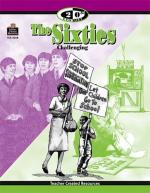|
This section contains 898 words (approx. 3 pages at 300 words per page) |

|
Radio, Infrared, and X-ray Astronomy.
Radio astronomers of the 1960s were as interested in sending out radio waves as they were in receiving them. In 1964 the radio dish at Arecibo in Puerto Rico was used this way. It bounced radar off planets in the solar system and detected the returning waves, allowing astronomers to make more accurate measurements of orbits around the sun, distances from Earth, tilts of the axes of the planets, and speeds of rotation on the axes than had been possible before.
Mapping Venus.
Three groups of astronomers used radar during the decade to map Venus, which is covered by clouds, so its surface is not visible to ordinary telescopes. Cornell astronomers used the Arecibo observatory. The Jet Propulsion Laboratory (JPL) in Pasadena, California, and Lincoln Laboratory at the Massachusetts Institute of Technology (MIT) bounced radar off the...
|
This section contains 898 words (approx. 3 pages at 300 words per page) |

|




